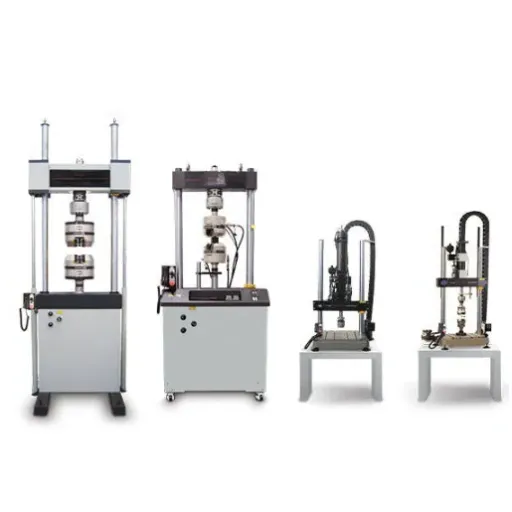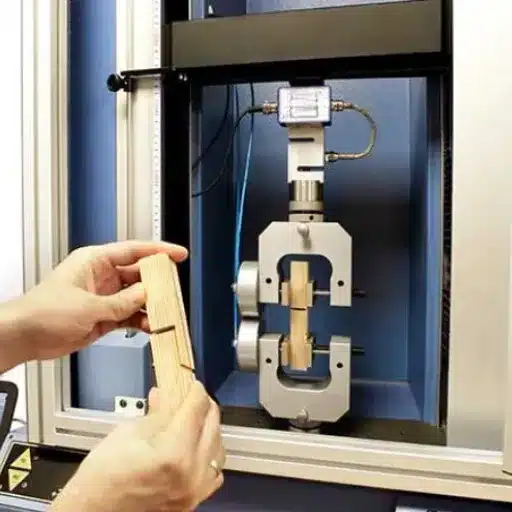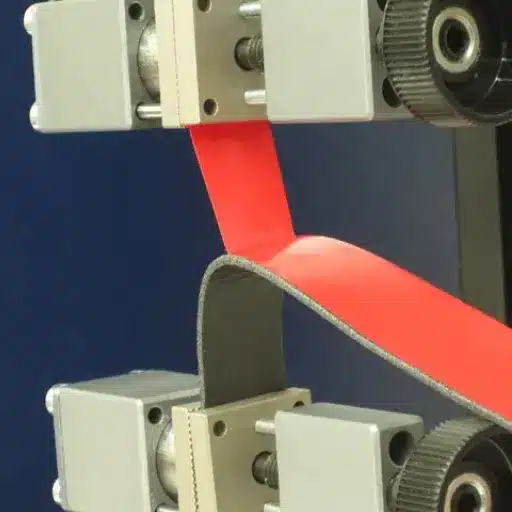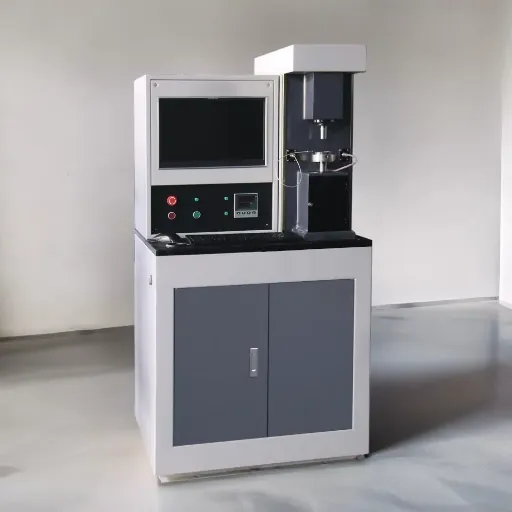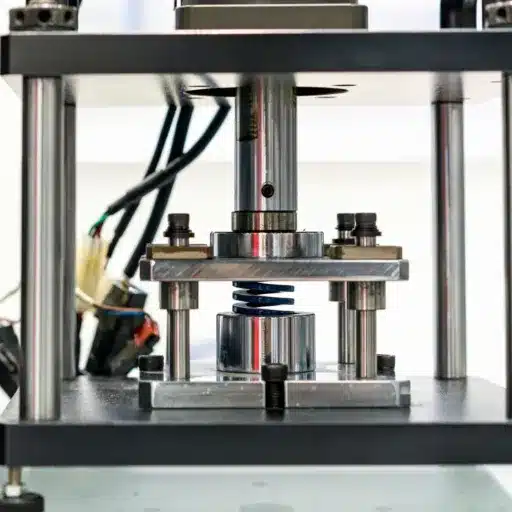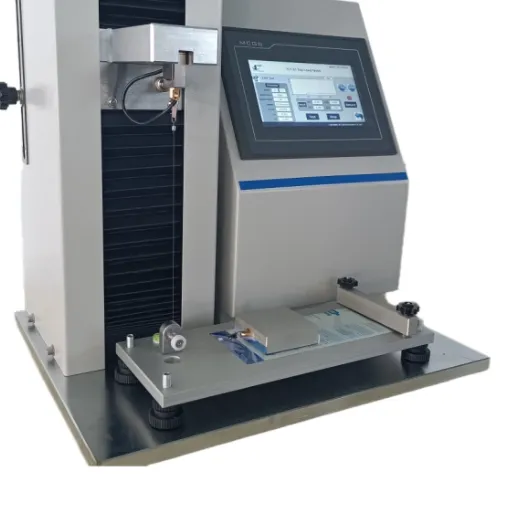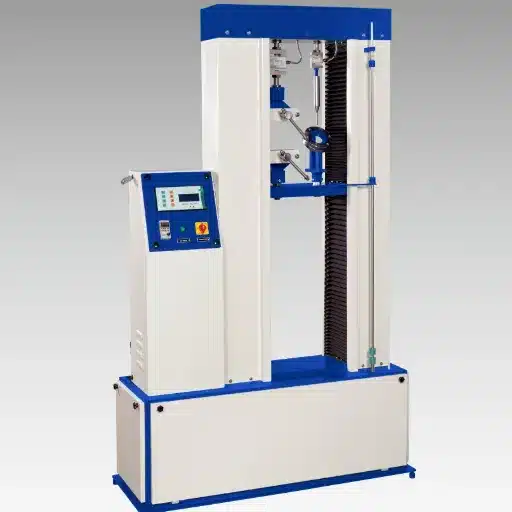From construction to manufacturing—material strength and flexibility are essential knowledge. And when it comes to bend testing and bending machines, they are used to ascertain the ability of materials to take stress and deformation; therefore, offering an insight into the strengths and performance of the materials in actual conditions. We will first analyze bend testing, the working of bending machines, and the advantages of conducting a flexural test. Whether you are an engineer or in charge of quality control, or you are just curious about how things are tested, this article will provide you with the what-why-how so that you are better able to make decisions and ultimately improve the threadnames within your projects. Stay tuned to understand how these tests assist in your understanding of material behavior and structural reliability maintenance.
Introduction to Bending Testing Machines

Purpose and Functionality of Bending Machines
Bending test machines serve as essential tools in assessing the mechanical properties of materials when subjected to bending actions. These machines measure the resistance of a material to deformation or failure along with applied loads that provide vital information regarding strength, elasticity, and flexibility. As such, it is of utmost concern that materials are tested using bending methods to ensure their quality and safety in engineering and manufacturing applications.
Primarily, bending machines are used to analyze the performances of different materials like metals, plastics, and composites under simulated stress and strain in a real environment. In such a test, the material is subjected to a known force, stress, and strain behavior is recorded, and information gained from this analysis aids engineers in discovering whether the material qualifies for a particular application where structural reliability is very important-the building, automobile, or aerospace industries.
Bending tests also serve as a warning of failures before materials get into production or assembly, highlighting defects or weaknesses that enable the design of safer and more durable products. Simultaneously, comprehension of how materials behave under certain conditions helps companies in optimizing manufacturing processes and choosing the most lucrative materials for the project.
Importance of Bending Tests in Material Testing
Material testing by bending is an essential procedure in determining material behavior under certain forces and in comparison with operational safety. Bending tests are performed to see if materials will suffer deformation under load in certain circumstances considered applicable in real life. Once we know the bending strength and flexibility of materials, engineers can decide whether their properties fit certain applications such as to assure that they meet performance standards.
Key Advantage:
One of the chief advantages of bending tests lies in detecting potential weaknesses or defects early in the development cycle. This helps prevent poor materials from being deployed into production while largely lessening the possibility of structural failure.
For an industry where safety means everything, such as in construction, automotive, or aerospace, bending tests would ascertain the ability of materials to endure operational stresses without being fractured or compromised.
Furthermore, bending tests assist in optimizing production and material choice processes. Knowledge of the deformation of materials under stress enables companies to enhance product design in terms of durability and cost-effectiveness. This knowledge not only improves the ultimate quality of a product but also helps industries in minimizing waste and creating sustainable material choices by using their materials in the best possible way. Bending tests therefore remain one of the primary investigations involved in material testing procedures across many industries.
Growing Significance Across Industries
The importance of material testing in bending tests has been on the rise across different industries due to demands for greater longevity and performance. Aeronautics, construction, and automotive sectors employ these tests with high intensity for checking the integrity and reliability of their components. By knowing the behavior of materials under load, industries prevent costly failures and produce products in accordance with very strict safety and operational standards.
More bending tests are done with perhaps sustainable materials. As the current emphasis of mankind lies on environmental conservation, industries are ramping up efforts toward waste reduction and the promotion of eco-friendly alternatives. Bending tests help companies assess the strength and usability of recycled or bio-based materials so that these can serve as effective substitutes for conventional resources. The deterrence of bending test idea allows such innovations to sire from an environment dependent on sustainability vision.
Lastly, importance is attached to bending tests being considered for consumer goods and electronics. Items that possess moving parts or formations that suffer from high levels of usage, like furniture and devices, must undergo very rigorous testing concerning quality and life expectancy. These tests offer valuable guidance to manufacturers for material optimization, guarantee that materials measure up to consumer expectations, and retain competitiveness in the market.
Benefits of Bending Testing Machines
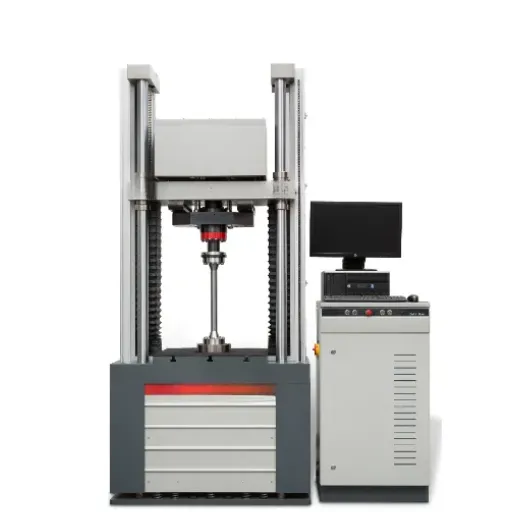
Assessing Flexibility and Elasticity
Bending testing machines are considered important for the assessment of flexibility and elasticity of materials. They measure the reaction of a material under various forces bending, stretching, etc., so as to tell about its ability to resume its original shape post-deformation. It becomes pertinent to ascertain if a material can be subjected to repeated tests of use or whether it would undergo a permanent deformation.
Bending testing machines simulate real-life conditions to provide information regarding the material’s performance while under stress. The tests thus identify an elastic limit up to which point the material can stretch or bend without being damaged in any way. This data is immensely useful in industries where durability and reliability matter, such as construction, automotive, and aerospace.
They can even use the data for choosing better materials and product designs. Yes, the knowledge about material flexibility and elasticity is put forward to companies so they can create a more high-performing and safer product that could last longer, giving consumers higher satisfaction levels.
Evaluating Structural Integrity
Bending testing machines are used to test the structural integrity and mechanical properties of materials. The machines apply force measured to check the chemical resistance of bending-the materials may yield, able to bend, or resist bending. These tests enable materials to be qualified with respect to safety and performance criteria under actual field conditions.
The bending test usually subjects material specimens to a calculated load until deformation or fracture occurs. This test will disclose yield strength, ultimate strength, and modulus of elasticity. These data shall be accounting for the manufacturing processes and partner engineers in the behavior of materials under stress on any conceivable practical application, such as beams for buildings or components for machinery.
After all, industries require this test to make decisions during product designing and production. The testing assures materials are sufficiently durable and reliable to resist environmental conditions so as to avoid failure of the product and to increase its life span. Therefore, bending test machines ensure quality, safety, and productivity in material and product development.
Versatility in Various Industries
Due to the evaluating capabilities of flexural testing machines, these machines are found throughout industries that attempt to stress the materials or determine performance and durability. The construction industry especially uses these machines to test materials such as steel and reinforced concrete for flexure and strength to be sure of their safety and reliability while employed in buildings, bridges, and infrastructures. Without these tests, constructions could simply collapse when placed under pressure, thereby posing serious hazards and costs.
Industry Applications:
- Automotive & Aerospace: Testing beams, frames, and panels for stress resistance
- Construction: Verifying steel and concrete strength for buildings and bridges
- Consumer Goods: Ensuring durability of furniture and electronic devices
- Sports Equipment: Testing materials for prolonged use and functionality
The bending test is used in automotive and aerospace applications to check performance of different members such as beams, frames, and panels. The material should resist the repeated stress without failure, or at least without any form of plastic deformation. By these machines, manufacturers assure that their designs pass the highest standards of safety and withstand the mechanical stresses during operation.
Another way they are widely used is in the manufacture of consumer goods and electronics. For example, they help ensure that materials in mass-produced articles, such as furniture, electronic devices, or sports equipment, retain their functionality and durability during prolonged use. This highlights the bending test machine’s importance in optimizing materials for performance and lifespan and ensuring consumer satisfaction.
Enhancing Safety Standards
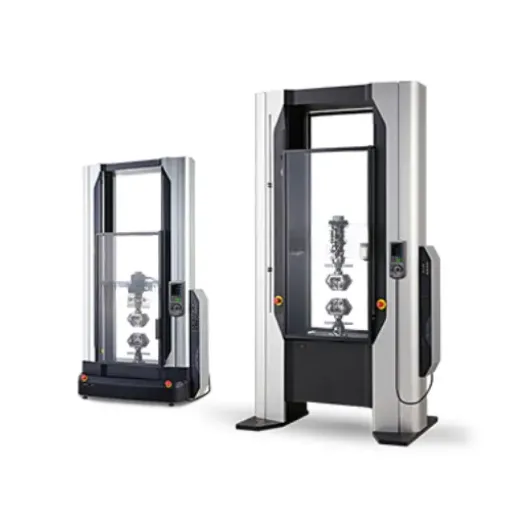
Meeting Rigorous Regulations
Bending testing machines are actively employed to ensure compliance with safety requirements and regulations. Bending testing machines analyze the strength and integrity of materials and components under applied stresses. These machines are constructed in such a way that numerous strength and flexibility criteria can be tested for actual deformations experienced in workplaces. The results earned should satisfy the various legislations, so manufacturers are able to avoid liability for material and design failures, thus preserving the safety of the end-user.
Therefore, to meet these requirements, testing machines are set up and calibrated by the technical people according to the norms specified by international standards, for example, ASTM and ISO. These standard tests lay down the general methods for checking materials anywhere and in any industry, be it construction or automobile manufacturing. In this way, manufacturers can then guarantee the quality of their products for acceptance and passing designs on security inspection at diverse markets being considered.
More importantly, such data collected from bending tests allow manufacturers to make improvements on materials as well as designs beforehand. If weaknesses arise in the test, they must be fixed accordingly to ensure the product becomes better than the least safety levels. But also this process enhances consumer trust and satisfaction, since products are proven to stand for durability and reliability under the prescribed conditions of use.
Performance Criteria for Material Reliability
Material reliability rests upon several critical performance criteria, ensuring that a product conforms to set standards of safety and durability. First and foremost, mechanical strength refers to the capability of a material to resist forces or stresses-pressure, tension, and bending-until they finally fail. Basically, materials have to be robust enough to endure whatever comes up in real life. The second performance criterion concerning reliability is durability-resistance against wear, fatigue, and environmental attack-temperature shifts, moisture, and small amounts of corrosion. The dependable materials maintain their integrity for use over time and under conditions causing wear and tear in their expected life.
| Performance Criteria | Description | Importance |
|---|---|---|
| Mechanical Strength | Resistance to pressure, tension, and bending forces | Prevents material failure under expected loads |
| Durability | Resistance to wear, fatigue, and environmental factors | Ensures long-term material integrity |
| Manufacturing Quality | Consistency and uniformity across production batches | Maintains reliability standards across all products |
From the standpoint of material reliability, consistency in manufacturing quality is important. This includes specially maintaining the uniformity of specifications in every batch produced. Proper quality-control measures must be in place, plus adherence to given tolerances to make sure the materials do not easily come up with defects that could lead to unreliability. Confidence in the reliability and performance of such materials is now granted when all these criteria are met.
Preventing Accidents Through Testing
Testing identifies any potential flaws or weaknesses found in a material before the material is put to direct use on-site. Through simulation under different conditions, in terms of stresses, pressures, or temperatures, testing detects failures, thereby guaranteeing that only materials that are safe and reliable are used, and preventing accidents caused by the failure of a material, putting lives and property at stake.
In addition to testing, manufacturers must adhere to safety standards and regulations. By doing so, they will produce materials that meet required adequacy levels for safety and performance. Doing this continuously can help in the detection of defects in their early stages. Whenever possible, corrective measures can be taken before materials go on to be used extensively.
Testing further promotes accountability and quality assurance in a firm. It delivers insight into how materials will perform in different situations and scenarios, mitigating the chances of unexpected failure. When materials industries develop and use sound testing tools for ensuring their products’ integrity, the chances of accidents occurring come down and the materials gain trust.
Cost Efficiency and Quality Assurance
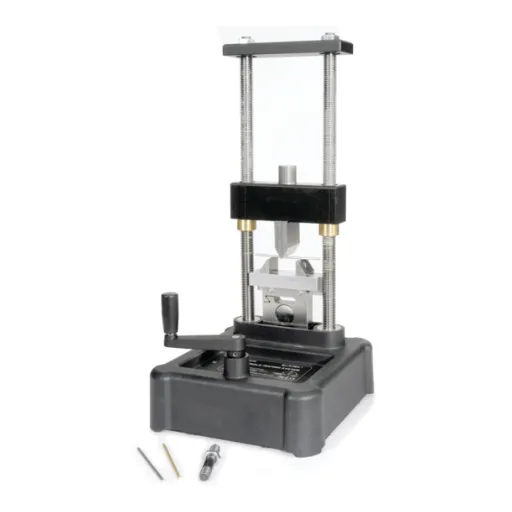
Reducing Waste and Avoiding Recalls
Bending test machine-based applications find their role in reducing waste occasioned by materials not conforming to the durability and flexibility standards required. The point of concern is to detect flaws or inconsistencies which allow the product, or material, to undergo scaling production and thus minimize the waste of that particular product. Hence, this focused approach will disallow any lower-grade materials from being mass-produced, thus saving scarce resources and reducing overall waste.
Following this, the machines are used to avert recalls by the verification of quality and safety of the product to meet the standards before it reaches the consumers. The testing will ascertain that materials can take strains and stresses on real applications, with individuals or objects, minimizing those failures that may lead to costly recalls-nevertheless safeguarding customer trust and company goodwill as a result.
Integration of bending testing early in development ensures lower costs and higher quality assurance. Less production error occurs when materials meet the performance standard, counting optimization of resource use, and there is enhanced reliability in the end product, benefiting both the manufacturer and the consumer.
Identifying Weaknesses in Materials
The bending testing machines are important for testing the weakness of material by applying a definite force. These machines measure how a material flexes, how stiff it is, and how easily it is fractured; these are all chief data used to verify whether or not the material stands the set performance standards. In this way, manufacturing companies can verify if the material will sustain in its intended purpose without too many failures.
Early Detection Benefits:
- Identifies brittleness and unequal strength distribution
- Enables design modifications before mass production
- Reduces field failures and associated costs
- Improves overall product reliability and safety
Often the bending tests reveal faults in a material such as brittleness or unequal strength; the producers are able to take action to design around those faults. Applying force gradually, the machine pinpoints stress and weaknesses. With this information, either the material itself or alternatives can be instituted to assure increased durability and reliability.
The use of bending testing equipment while on the drawing board prevents the very failures for which the corresponding defects in the field would have been blamed. Early constructive identification of weaknesses reduces production errors and provides efficient use of resources toward making safer products of higher quality. This mutually beneficial situation nurtures trust for the end product regarding its longevity and reliability.
Improving Overall Product Quality
Bending testing machines serve to enhance product quality by ensuring that materials having some inherent weaknesses do not proceed far into the production system. Having been tested for their reaction to stresses, analysts can decide if the materials are fit for design and safety standard requirements. Identified defects or inconsistencies would then call for adjustments in manufacturing, resulting in enhanced durability and reliability.
A bending test subjects a material to stress to test for strength, flexibility, and durability under varying conditions. With this information, quality control is emphasized, and production standards are in alignment with industrial standards. Removing structural weaknesses before a product reaches the market lowers the chances of failure and, most surely, strengthens customer satisfaction because the product equally satisfies or does better than their expectations.
On the other hand, bending testing machines are also a means to resource efficiency. Identifying defective materials early helps manufacturers reduce waste or product withdrawals from the market or even more expensive fixes. It is a popular concept for sustainable production, hence making bending testing instruments popular for supply chain companies to deliver a product that is recognized as high-quality, safe, and trustworthy.
Impact on Industrial Progress

Advancements in Product Innovation
A bending testing machine plays a crucial role in product innovation. In assessing mechanical properties of materials like flexibility, elasticity, strength, and so forth, the machines assist manufacturers in creating products worthy of durability and performance standards. Testing ensures material strength against specific stresses, yet the study of these materials gives rise to composites and new designs that can be employed innovatively in construction, aerospace, and automotive industries.
With the bending testing machines, companies have the chance to study materials under extreme conditions. Real-world stresses are put on manufacturers’ products in order to simulate what happens during the product’s lifecycle for use in further product refinement and in material selection for specific environments-for the good of efficiency and safety. For instance, developments in lightweight yet strong materials could arise largely thanks to extensive bending testing, resulting in developments in both functional and environmental aspects.
Furthermore, bending testing machines help organizations reduce costs while increasing productivity. Weaknesses in materials can be detected early in the development process, hence eliminating the chances of failures, return rates, or costly recalls by the time the product is on sale. By creating better products, these machines drive innovation and customer satisfaction. With their focus on material testing and research unto innovation, bending testing machines thus have to remain considered as important tools in contemporary industrial manufacturing.
Role of Bending Testing in Modern Industry
Conducted to ensure that materials and products meet durability and reliability requirements, bending testing inhabits an important role in the modern industry. One also considers the engineering challenge of measuring flexibility, strength, or resistance stress under bending force-pressure, thereby judging whether or not the material really serves the application requirement under question in construction, automotives, aerospace, etc. While subjected to bending under controlled conditions, candidate weaknesses or failure points can be detected in the early phases of manufacturing.
Safety and quality enhancement through bending testing is one of the foremost advantages. Be it a bridge, a vehicle, or any smaller components like metal brackets, bending tests provide data on which design decisions come to be based, to ensure that structures and products meet safety standards. That is to say, it would highly mitigate the risk of future failures, which invariably lead to huge costs of repair at best or costly accidents and perhaps reputation loss for companies. Bending tests also ensure compliance with industry regulations, which is critical for market acceptance and consumer trust.
Besides that, the bending testing can be another tool for innovation through the development and optimization of new materials. Engineers may check the behavior of new materials against bending and evaluate possible improvements. That means not just better products but also better and more sustainable practices, as the manufacturer may reduce material usage without compromising strength or performance. All in all, these bending testing machines are truly valuable in the manufacture of better and reliable products responsive to modern industry needs.
Future Trends in Material Testing
The integration of technically advanced systems capable of automation, AI, and machine learning is the future bending testing machine. These can provide accuracy, speed, and efficacious testing so the manufacturers can certify materials to an extremely fine degree. Such automated systems could eliminate human errors, while AI-based data analysis could spot trends to further make recommendations for materials improvement.
Future Technology Integration:
- AI & Machine Learning: Enhanced accuracy and predictive analysis
- Automation: Reduced human error and increased efficiency
- Sustainability Focus: Energy-efficient testing processes
- Modular Design: Adaptable systems for various materials
Another major trend that affects material testing is sustainability. The innovations in bending testing machines are geared toward reduction in energy consumption to promote the right balance of environment-friendly practices. For example, there is a new system in design to optimize the usage of materials in such a way that it uses fewer resources while ensuring that the product meets performance criteria. This trend is in consonance with the trend for greener manufacturing processes worldwide.
Lastly, customization and adaptability would be one of the major trends provided. In the future, the bending testing machines are supposed to be of a modular nature, to be adapted for a wide variety of materials and industries. That type of adaptability would ensure that testing remains relevant as new materials are developed and new industry requirements come into being. Those trends together create a promising background for bending testing machines to promote innovation and sustainability in material science and engineering.
Frequently Asked Questions (FAQ)
Q: What are the advantages of using a bending testing machine?
A: Bending testing machines have the advantages of providing the exact measurement of the flexural strengths and moduli, which are vital to the mechanical parameter of the materials under bending loads. The machines also facilitate an assessment of the resistance to bending for the evaluation of the materials, mainly composite materials, or other structures, in a controlled manner.
Q: What is the procedure of a three-point bending test?
A: The three-point bending test is a standard test method where the specimen is supported at two ends, and a load is applied at the center. As such, the manipulated bending moment is constant, and thus flexural properties are determined, such as the maximum bending stress and deflection at failure.
Q: Which materials can be tested in such universal test machines?
A: Universal testing machines are usually used to test metals, plastics, rubber, and composites. The machine is also used to test for tensile strength, flexural strength by three-point bending, and four-point bending tests on specimens, which characterizes the materials in mechanical terms.
Q: What is the importance of specimen preparation in bending tests?
A: Preparation of the specimens for bending tests is important to ensure that the specimen conforms to the standards in dimensions and surface finish. Any faults in preparation affect the test results and cause inaccuracies in our estimate of the flexural strength and ductility of the material.
Q: What the differences between a three-point and a four-point bending test?
A: While the three-point bending test puts a single load at the center of a specimen, the four-point bending test puts two loads on the specimen, creating a constant moment region. The four-point bending test is mostly used in cases when the material exhibits nonlinear behavior and requires a more uniform distribution of bending moments.
Q: What are some common applications of bending testing machines?
A: Bending testing machines are widely employed in material testing laboratories for the determination of mechanical properties of structures and components such as beams, panels, and loads-bearing elements. In other words, they assist with understanding how the material reacts to loads applied in bending, which constitutes a critical step in the design and construction of engineering works.
Q: What are some disadvantages of the bending tests?
A: A drawback of bending test methods, like three-point flexural tests, is their inability to simulate real-life conditions for certain materials. Certain materials behaving differently under complex load conditions in reality than in controlled bending conditions in a laboratory run the risk of misleading results.
Q: Are bending test machines capable of performing repetitive bending tasks?
A: Yes, bending test machines can be made to perform repetitive bending tasks to test the performance of materials under cyclic load conditions. This is important in industries where materials go through continuous bending, such as automotive or aerospace industries.
Q: How does the bending moment affect the test result?
A: The bending moment acts in large ways regarding the test specimen during a bending test. It determines the bending stresses and the resultant deformation experienced by the material and contributes to measured values for flexural strength and modulus. Understanding this last relationship is needed to interpret the test results correctly.
Q: What role does a test fixture play in bending tests?
A: In bending tests, the test fixture secures the specimen for alignment during testing. It ensures a consistent loading condition throughout a test, thus ensuring more accurate results by minimizing variables in setup.
References
Collective Benefits of Bend Testing Machine – Presto Group – Highlights the usefulness of bend testing machines in measuring material strength and modulus in industrial applications.
Bend Testing – TestResources – Discusses the simplicity, cost-effectiveness, and informativeness of bend testing for material characterization.
Advantages of Guided Bend Test – Infinita Lab – Explains the non-destructive nature of guided bend testing and its benefits for further examination.
Essential Guide to Bend Testing: Evaluating Material Strength – Biopdi – Covers the versatility, cost-effectiveness, and comprehensive data provided by bend testing.

